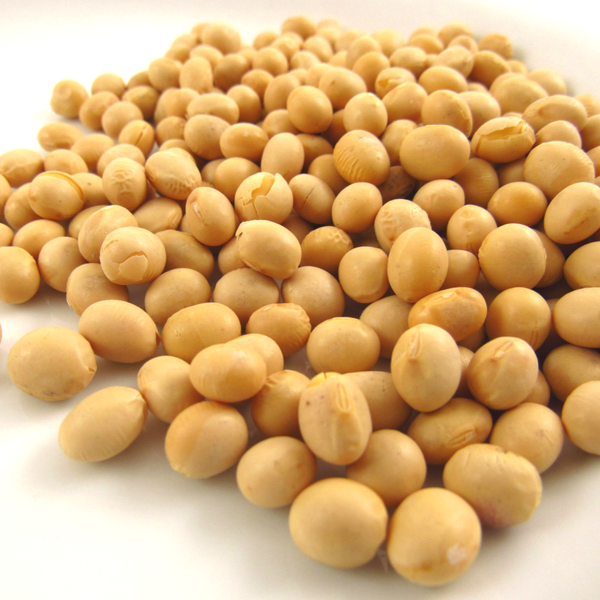In today’s Mordant Monday (excuse the awful pun – I found it online), we check out how to use soy as a binder for natural dyes and pigments. Before the widespread use of acrylic paints and mediums, artists had ingredients from the natural world to use for painting and printing on paper and canvas. They used a wide range of natural binders including tree sap, milk, egg, oils, minerals and other substances that helped pigments stay attached to substrates. In Japan, soybeans are the most common binder for textile work, and it serves as a sizing to add body to fabrics, to hold pigments on the surface of the cloth, and as a final layer to help pigments and dyes bond. Binders are different than mordants as a mordant combines with dyes to form a chemical connection between the dyestuff and the fabric, while binders are used to “glue” the colorant to the fabric. Having soy as an option in your natural dye practice opens up a world of surface design techniques and options for creativity.
How to paint and print with natural dyes is one of the most common questions we get, and this book offers an excellent method for experiments. There are many other methods, but using soy is an economical and effective way to enter into the world of Japanese surface design techniques.

Our guide on this journey is John Marshall and the revised edition of his book, Salvation through Soy. John first published Salvation through Soy in 2002 and the small, black and white book was our information and inspiration for many years. We freely adapted this traditional Japanese binder to all sorts of surface design techniques and experiments. With the new, expanded, larger format and full color second edition, John shares his insights and expertise on how to use just about every form of the humble bean: from make your own soy juice to grinding soy flour to running to the local grocery store for a carton (he advises against the chocolate flavored version). The instructions are clearly illustrated with step-by-step guidance and advice.
If you are interested in specific Japanese techniques using soy, John demonstrates how to use Japanese tools including brushes, grinders and stretcher bars. He also covers the use of soy as a post-indigo sizing to reduce crocking and rub off. John concludes this useful book with a FAQ and also advice against using fermented (smelly) soymilk that is long past its usefulness with textiles and exhorts you to make it fresh and often! The final few pages are an ecletcic mix of traditional doll making instructions and soybean ceremonies and a lovely cheesecake recipe (it does not use any soybeans) that is a tribute to his editor. The final treat is a real silk swatch of naturally dyed, katazome stenciled fabric cured with soymilk. The inside cover is signed and dated by John.




